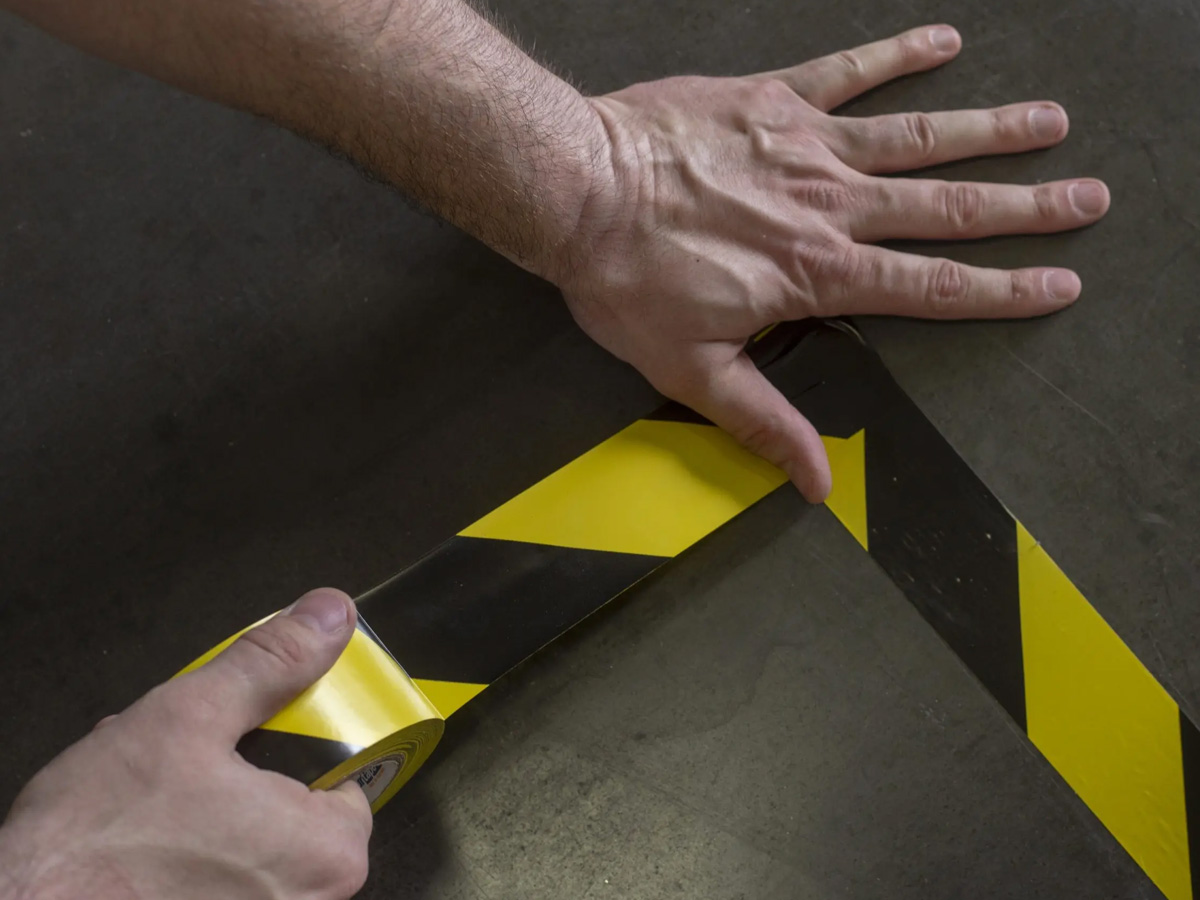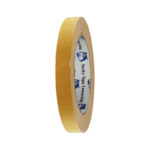In the dynamic environments of industrial facilities, warehouses, and even office spaces, maintaining organisation and safety is critical. Floor marking tape has emerged as a vital tool in achieving these goals, providing a simple yet effective method to delineate spaces, guide traffic, and enhance safety. In this comprehensive guide, we’ll explore how floor marking tape can transform your workspace into an efficient, organised, and safe environment.
The Importance of Floor Marking Tape
Floor marking tape serves multiple purposes in a variety of settings. Here are some of the key benefits:
- Enhanced Safety: By clearly marking hazardous areas, safe zones, and emergency exits, floor marking tape helps prevent accidents and injuries.
- Improved Organisation: Tapes can delineate different work areas, storage spaces, and pathways, ensuring that everything is in its place and easy to find.
- Optimised Workflow: Clear markings help streamline movement, reduce confusion, and increase efficiency by guiding workers and vehicles along designated routes.
- Compliance with Regulations: Many industries have safety regulations that require proper floor markings. Using the correct PVC electrical tape helps ensure compliance and avoid penalties.
Applications of Floor Marking Tape
Floor marking tape is versatile and can be used in a myriad of ways to improve safety and organisation:
- Pathways and Walkways: Marking pedestrian pathways helps keep foot traffic separate from vehicular traffic, reducing the risk of collisions.
- Hazard Zones: Use bright, reflective tapes to highlight hazardous areas, such as near heavy machinery, to alert workers to potential dangers.
- Storage Areas: Clearly marked storage areas help maintain organisation, making it easy to find and return items, thus improving inventory management.
- Workstations: Marking individual workstations ensures that each worker has a defined space, which can enhance productivity and reduce clutter.
- Safety Equipment: Highlight the locations of fire extinguishers, first aid kits, and emergency exits to ensure they are easily accessible during emergencies.
- Assembly Lines: In manufacturing, marking different stages of the assembly line helps streamline the process and improve efficiency.
Types of Floor Marking Tape
Choosing the right type of floor marking tape is crucial to ensure durability and visibility. Here are some common types:
- Vinyl Tape: Durable and easy to apply, vinyl tape is suitable for general-purpose floor marking. It comes in various colours and can withstand moderate foot traffic.
- Reflective Tape: Ideal for low-light environments, reflective tape enhances visibility and is commonly used in areas where safety is a concern.
- Anti-Slip Tape: This tape has a textured surface to provide traction, making it perfect for marking areas where slip hazards are present.
- Glow-in-the-Dark Tape: Useful in power outages or low-light conditions, glow-in-the-dark eco friendly sticky tape ensures pathways and exits remain visible.
- Colour-Coded Tape: Different colours can signify different areas or types of hazards, making it easy to convey information at a glance.
Best Practices for Using Floor Marking Tape
To maximise the effectiveness of floor marking tape, it’s important to follow these best practices:
- Plan Your Layout: Before applying the tape, plan the layout carefully. Consider the flow of traffic, potential hazards, and areas that need clear demarcation.
- Clean the Surface: Ensure the floor surface is clean, dry, and free of dust or grease. This will help the tape adhere properly and last longer.
- Use Consistent Colours: Develop a colour-coding system that is consistent and easy to understand. For example, use yellow tape for caution areas and red tape for hazards.
- Apply Evenly: Apply the tape in straight lines and press it down firmly to avoid air bubbles and ensure a strong bond with the floor.
- Regular Maintenance: Inspect the tape regularly for wear and tear. Replace any damaged or worn-out tape to maintain visibility and effectiveness.
- Training and Communication: Educate employees on the meaning of different tape colours and patterns. Clear communication ensures everyone understands the floor markings and adheres to safety protocols.
Industry-Specific Applications
Different industries have unique requirements for floor marking tape. Here’s how various sectors can benefit from its use:
- Manufacturing: In manufacturing plants, safety tape for floors can delineate different production zones, mark hazardous areas, and guide the flow of materials and personnel.
- Warehousing: Warehouses can use tape to outline storage areas, mark safe pathways for forklifts and pedestrians, and highlight emergency exits and equipment.
- Healthcare: Hospitals and medical facilities can benefit from floor marking tape by marking emergency routes, patient areas, and equipment storage zones to ensure quick access and organisation.
- Retail: Retail stores can use tape to manage customer flow, designate checkout lines, and highlight promotional areas.
- Education: Schools can use floor marking tape to organise classroom spaces, mark social distancing guidelines, and guide students during emergency evacuations.
Implementing Floor Marking Tape in Your Facility
To successfully implement floor marking tape in your facility, follow these steps:
- Assessment: Conduct a thorough assessment of your facility to identify areas where floor marking tape can improve safety and efficiency. Consider traffic patterns, potential hazards, and workflow.
- Selection: Choose the appropriate type and colour of tape based on your specific needs and environmental conditions. Ensure the tape you select is durable and suitable for your floor type.
- Application: Apply the tape according to your planned layout. Use tools such as tape applicators to ensure straight lines and even application.
- Inspection and Maintenance: Regularly inspect the tape to ensure it remains visible and intact. Schedule maintenance to replace worn or damaged tape promptly.
- Training: Train employees on the significance of the floor markings and ensure they understand the safety and organisational benefits.
Conclusion
Floor marking tape is a powerful tool that can significantly enhance safety, organisation, and efficiency in a variety of environments. By clearly delineating spaces, guiding traffic, and highlighting hazards, it helps create a well-organised and safe workspace. Whether you’re in manufacturing, warehousing, healthcare, retail, or education, implementing floor marking tape from adhesive tape suppliers can transform your facility. With careful planning, proper application, and regular maintenance, floor marking tape will contribute to a more productive and safer workplace. Embrace this simple yet effective solution to mark the way to a more efficient and organised future.















